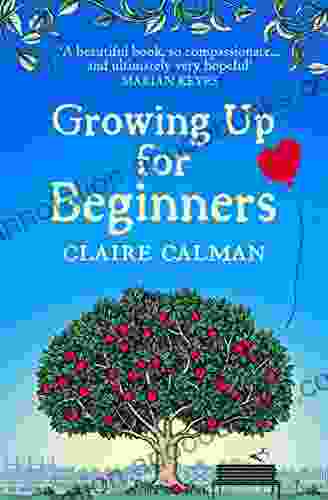Unlock the Power of Dialogue in the Classroom: A Comprehensive Guide for Educators

In today's rapidly evolving educational landscape, educators are constantly seeking innovative approaches to engage students and foster meaningful learning. Dialogic teaching, a transformative pedagogy that centers around dialogue and collaborative inquiry, has emerged as a powerful tool for creating vibrant and intellectually stimulating classrooms.
5 out of 5
| Language | : | English |
| File size | : | 3169 KB |
| Text-to-Speech | : | Enabled |
| Enhanced typesetting | : | Enabled |
| Word Wise | : | Enabled |
| Print length | : | 341 pages |
| Screen Reader | : | Supported |
This extensive guide, "Getting Dialogic Teaching Into Classrooms," delves into the principles, practices, and transformative impact of dialogic teaching. We will explore how educators can harness the power of dialogue to enhance student comprehension, develop higher-Free Download thinking skills, and nurture a culture of respect and understanding.
The Pillars of Dialogic Teaching
Dialogic teaching is rooted in several fundamental pillars that underpin its effectiveness:
- Teacher as Facilitator: The teacher plays the role of a guide and facilitator, encouraging student participation, listening actively, and fostering a constructive learning environment.
- Student-Centered Focus: Dialogic teaching places students at the center of the learning process, valuing their perspectives and fostering their ownership of knowledge.
- Collaborative Inquiry: Through discussion and questioning, students engage in collaborative inquiry, exploring multiple viewpoints and developing a deeper understanding of complex concepts.
- Diverse Perspectives: Dialogic teaching embraces diverse perspectives and encourages students to share their experiences and ideas, fostering inclusivity and empathy.
- Learner Agency: Students are empowered to take ownership of their learning, actively участвуя in the dialogue and shaping the direction of their education.
Implementing Dialogic Teaching in the Classroom
To implement dialogic teaching effectively, educators can follow a structured approach that involves:
- Creating a Dialogue-Rich Environment: Establish a classroom culture that values listening, respectful discourse, and diverse perspectives.
- Scaffolding Students: Provide students with the necessary support and guidance to engage in meaningful对话, such as providing sentence starters or discussion prompts.
- Facilitating Dialogic Discussions: Guide discussions by asking open-ended questions, listening attentively to students, and encouraging diverse participation.
- Promoting Collaborative Inquiry: Foster collaboration by encouraging students to share their ideas, question each other, and build on their collective knowledge.
- Reflecting and Evaluating: Regularly reflect on the effectiveness of dialogic teaching practices and make adjustments as needed to ensure continuous improvement.
Benefits of Dialogic Teaching
The benefits of implementing dialogic teaching in the classroom are far-reaching, including:
- Enhanced Student Comprehension: Dialogue helps students to clarify their understanding, connect new information to prior knowledge, and develop a deeper appreciation for the complexity of concepts.
- Development of Critical Thinking Skills: Participation in dialogue encourages students to analyze, synthesize, and evaluate information, fostering higher-Free Download thinking skills.
- Cultivation of a Collaborative Classroom Culture: Dialogic teaching promotes peer interaction, empathy, and respect for diverse perspectives, creating a supportive and inclusive learning environment.
- Empowerment of Students: By giving students a voice in the learning process, dialogic teaching empowers them to take ownership of their education and develop their agency.
- Improved Student Outcomes: Research has consistently shown that students who engage in dialogic teaching demonstrate significant improvements in their academic performance and long-term learning outcomes.
"Getting Dialogic Teaching Into Classrooms" provides a comprehensive roadmap for educators to effectively implement dialogic teaching in their classrooms. By embracing its principles, practices, and benefits, educators can create vibrant and engaging learning environments where students thrive, develop their critical thinking skills
5 out of 5
| Language | : | English |
| File size | : | 3169 KB |
| Text-to-Speech | : | Enabled |
| Enhanced typesetting | : | Enabled |
| Word Wise | : | Enabled |
| Print length | : | 341 pages |
| Screen Reader | : | Supported |
Do you want to contribute by writing guest posts on this blog?
Please contact us and send us a resume of previous articles that you have written.
 Book
Book Novel
Novel Page
Page Chapter
Chapter Text
Text Story
Story Genre
Genre Reader
Reader Library
Library Paperback
Paperback E-book
E-book Magazine
Magazine Newspaper
Newspaper Paragraph
Paragraph Sentence
Sentence Bookmark
Bookmark Shelf
Shelf Glossary
Glossary Bibliography
Bibliography Foreword
Foreword Preface
Preface Synopsis
Synopsis Annotation
Annotation Footnote
Footnote Manuscript
Manuscript Scroll
Scroll Codex
Codex Tome
Tome Bestseller
Bestseller Classics
Classics Library card
Library card Narrative
Narrative Biography
Biography Autobiography
Autobiography Memoir
Memoir Reference
Reference Encyclopedia
Encyclopedia Wesley N Chase
Wesley N Chase Chris Mares
Chris Mares Chuck Mcgill
Chuck Mcgill Phuong Tran Nguyen
Phuong Tran Nguyen Christopher Ali
Christopher Ali Thane Rosenbaum
Thane Rosenbaum Danno Sullivan
Danno Sullivan Gene Petty
Gene Petty Nicholas Tomihama
Nicholas Tomihama Chloe Liese
Chloe Liese Pam Durban
Pam Durban Christina Reese
Christina Reese Donald Aka Azure Dirnberger
Donald Aka Azure Dirnberger Tim Needles
Tim Needles Chris Hall
Chris Hall Monica Furlong
Monica Furlong William Weber
William Weber Chef Taylor
Chef Taylor Clark Aldrich
Clark Aldrich Christophe Guilluy
Christophe Guilluy
Light bulbAdvertise smarter! Our strategic ad space ensures maximum exposure. Reserve your spot today!

 Kazuo IshiguroUnveiling the Truth: "And the Band Played On" - A Poignant Narrative of the...
Kazuo IshiguroUnveiling the Truth: "And the Band Played On" - A Poignant Narrative of the...
 Herman MelvilleUnveiling the Wonders of Four-Eyed Fish Livebearing Fish: A Comprehensive...
Herman MelvilleUnveiling the Wonders of Four-Eyed Fish Livebearing Fish: A Comprehensive... Frank ButlerFollow ·19k
Frank ButlerFollow ·19k William PowellFollow ·15.7k
William PowellFollow ·15.7k Aaron BrooksFollow ·11.6k
Aaron BrooksFollow ·11.6k Rob FosterFollow ·12.3k
Rob FosterFollow ·12.3k Jan MitchellFollow ·17k
Jan MitchellFollow ·17k Junichiro TanizakiFollow ·13.2k
Junichiro TanizakiFollow ·13.2k Theo CoxFollow ·11.2k
Theo CoxFollow ·11.2k Jamie BellFollow ·14.8k
Jamie BellFollow ·14.8k

 Kevin Turner
Kevin TurnerDive into the Enchanting World of "Crazy Like Fox": A...
Prepare yourself for a literary adventure...

 Ralph Waldo Emerson
Ralph Waldo EmersonUnlock the Elegance of Daffodil Lace: An Immersive Guide...
: A Tapestry of Delicate...

 Gerald Parker
Gerald ParkerNever Lose An Argument Again: 20 Powerful Techniques From...
Are you tired of losing...

 Xavier Bell
Xavier BellSeven Animal Insertions Filet Crochet Pattern: Embark on...
Welcome to the captivating...

 Eugene Powell
Eugene PowellMagomago in TDS Magomago 12: An Unforgettable Adventure...
Step into the Enchanting World of...

 Marvin Hayes
Marvin HayesSoft Felting Needle Holder Excellence In Reborn Artistry
Unveiling the Secrets of the...
5 out of 5
| Language | : | English |
| File size | : | 3169 KB |
| Text-to-Speech | : | Enabled |
| Enhanced typesetting | : | Enabled |
| Word Wise | : | Enabled |
| Print length | : | 341 pages |
| Screen Reader | : | Supported |








